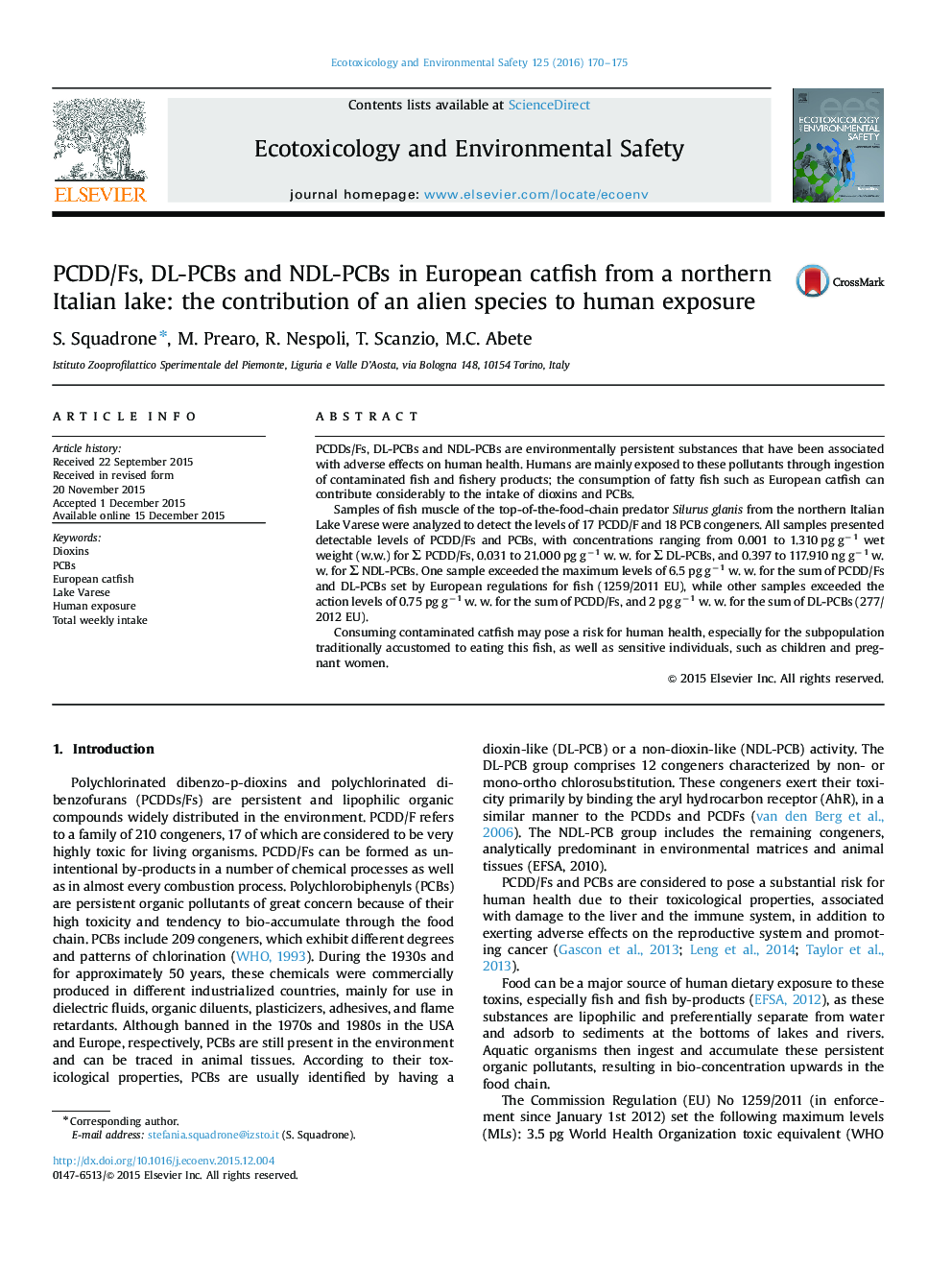| Article ID | Journal | Published Year | Pages | File Type |
|---|---|---|---|---|
| 4419454 | Ecotoxicology and Environmental Safety | 2016 | 6 Pages |
•We analyzed European catfish from a Northern Italian Lake.•Concentrations of PCBs strongly exceeded the limit set by EU Regulation.•∑ PCDD/Fs and DL-PCBs exceeded the recommended TWI.•Consuming contaminated catfish may pose a health risk for humans.
PCDDs/Fs, DL-PCBs and NDL-PCBs are environmentally persistent substances that have been associated with adverse effects on human health. Humans are mainly exposed to these pollutants through ingestion of contaminated fish and fishery products; the consumption of fatty fish such as European catfish can contribute considerably to the intake of dioxins and PCBs.Samples of fish muscle of the top-of-the-food-chain predator Silurus glanis from the northern Italian Lake Varese were analyzed to detect the levels of 17 PCDD/F and 18 PCB congeners. All samples presented detectable levels of PCDD/Fs and PCBs, with concentrations ranging from 0.001 to 1.310 pg g−1 wet weight (w.w.) for Σ PCDD/Fs, 0.031 to 21.000 pg g−1 w. w. for Σ DL-PCBs, and 0.397 to 117.910 ng g−1 w. w. for Σ NDL-PCBs. One sample exceeded the maximum levels of 6.5 pg g−1 w. w. for the sum of PCDD/Fs and DL-PCBs set by European regulations for fish (1259/2011 EU), while other samples exceeded the action levels of 0.75 pg g−1 w. w. for the sum of PCDD/Fs, and 2 pg g−1 w. w. for the sum of DL-PCBs (277/2012 EU).Consuming contaminated catfish may pose a risk for human health, especially for the subpopulation traditionally accustomed to eating this fish, as well as sensitive individuals, such as children and pregnant women.
